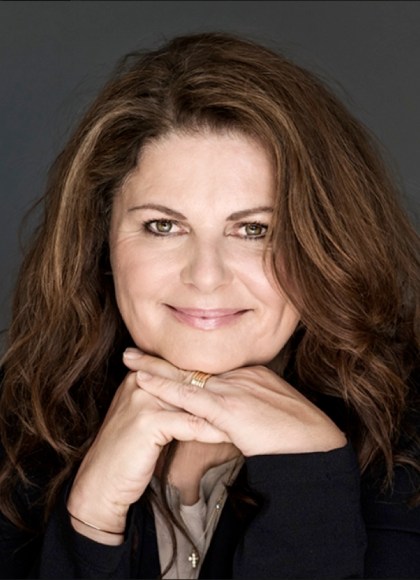Promotion
Use code FALL24 for 20% off sitewide!
The Drowned Girl (previously published as Only One Life)
Contributors
By Sara Blaedel
Formats and Prices
Price
$7.99Price
$11.99 CADFormat
Format:
- Mass Market $7.99 $11.99 CAD
- ebook $7.99 $9.99 CAD
- Audiobook Download (Unabridged)
- Trade Paperback $16.99 $22.99 CAD
This item is a preorder. Your payment method will be charged immediately, and the product is expected to ship on or around December 3, 2019. This date is subject to change due to shipping delays beyond our control.
Also available from:
Detective Louise Rick must race against the clock to stop a violent killer targeting immigrants in this disturbing and timely thriller, perfect for readers of Lisa Gardner, Tami Hoag, Tess Gerritsen, or Jo Nesbo.
It’s clearly no ordinary drowning. When a young girl is pulled from the watery depths, a piece of concrete tied around her waist and two mysterious circular patches on the back of her neck, Detective Louise Rick is immediately called out to Holbaek Fjord.
Her name was Samra, and when the police learn that she was a member of Holbaek’s sizeable Muslim immigrant community, they immediately assume it was an honor killing. Yet her mother insists Samra had done nothing dishonorable. Louise must navigate the complex web of family and community ties in the small town’s tightly knit Muslim community as she hunts a killer . . . before he strikes again.
Thriller master Sara Blaedel is in top form as Louise takes on what may be her most important-and most deadly-case yet.
It’s clearly no ordinary drowning. When a young girl is pulled from the watery depths, a piece of concrete tied around her waist and two mysterious circular patches on the back of her neck, Detective Louise Rick is immediately called out to Holbaek Fjord.
Her name was Samra, and when the police learn that she was a member of Holbaek’s sizeable Muslim immigrant community, they immediately assume it was an honor killing. Yet her mother insists Samra had done nothing dishonorable. Louise must navigate the complex web of family and community ties in the small town’s tightly knit Muslim community as she hunts a killer . . . before he strikes again.
Thriller master Sara Blaedel is in top form as Louise takes on what may be her most important-and most deadly-case yet.
Series:
-
"Sara Blaedel knows how to reel in her readers and keep them utterly transfixed."Tess Gerritsen, New York Times bestselling author of I Know a Secret
-
"Crime-writer superstar Sara Blaedel's great skill is in weaving a heartbreaking social history into an edge-of-your-chair thriller while at the same time creating a detective who's as emotionally rich and real as a close friend."Oprah.com
-
"One of the best I've come across."Michael Connelly
-
"Sara Blaedel is a force to be reckoned with. She's a remarkable crime writer who time and again delivers a solid, engaging story that any reader in the world can enjoy."Karin Slaughter
-
"Another suspenseful, skillfully wrought entry."Booklist on The Killing Forest
-
"Engrossing...Blaedel nicely balances the twisted relationships of the cult members with the true friendships of Louise, Camilla, and their circle."Publishers Weekly on The Killing Forest
-
"Blaedel delivers another thrilling novel...Twists and turns will have readers on the edge of their seats waiting to see what happens next."RT Book Reviews on The Killing Forest
-
"For readers who gorge on captivating characters and chilling suspense, THE FORGOTTEN GIRLS is a tantalizing treat. Enjoy yourself, America."Sandra Brown on The Forgotten Girls
-
"Sara Blædel is at the top of her game. Louise Rick is a character who will have readers coming back for more."Camilla Läckberg
-
"Crackling with suspense, atmosphere, and drama, THE FORGOTTEN GIRLS is simply stellar crime fiction. I loved spending time with the tough, smart, and all-too-human heroine Louise Rick--and I can't wait to see her again."Lisa Unger
-
"Will push you to the edge of your seat [then] knock you right off....A smashing success."BookReporter on The Killing Forest
-
"This is a standout book that will only solidify the author's well-respected standing in crime fiction. Blaedel drops clues that will leave readers guessing right up to the reveal. Each new lead opens an array of possibilities, and putting the book down became a feat this reviewer was unable to achieve. Based on the history of treating the disabled, the story is both horrifying and all-to-real. Even the villains have nuanced and sympathetic motives."RT Times on The Forgotten Girls - Top Pick **Nominated for a Reviewer's Choice Award**
-
"Gripping."Washington Post on The Forgotten Girls
-
"Tautly suspenseful and sociologically fascinating."BookPage on The Forgotten Girls
-
"Tightly knit."Kirkus Reviews on The Forgotten Girls
-
"Chilling...[a] swiftly moving plot and engaging core characters."Publishers Weekly on The Forgotten Girls
-
"Sara Blaedel's THE FORGOTTEN GIRLS is an emotionally complex police-procedural thriller ...With a gripping premise, fast-paced narrative and well-developed characters, THE FORGOTTEN GIRLS is an incredible read."FreshFiction.com
-
"Filled with thought-provoking twists and turns."Women's World
- On Sale
- Dec 3, 2019
- Page Count
- 432 pages
- Publisher
- Grand Central Publishing
- ISBN-13
- 9781538759868
Newsletter Signup
By clicking ‘Sign Up,’ I acknowledge that I have read and agree to Hachette Book Group’s Privacy Policy and Terms of Use

















